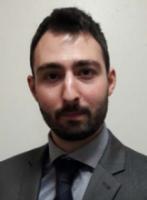
Dimitrios Kalliontzis received his Ph.D. from the University of Minnesota – Twin Cities. His dissertation investigated the behavior of precast concrete and masonry structures with jointed (rocking) connections. He received his MSc from Iowa State University, where he was awarded a PCI fellowship and Research Excellence for contributions to Structural Engineering. He completed his Diploma Degree in Civil Engineering at Aristotle University of Thessaloniki, Greece. Dimitrios Kalliontzis has also worked as a Technical Intern at Simpson, Gumpertz & Heger Inc, prior to joining the University of Minnesota.
Structural walls that undergo small permanent deformations during seismic events are an attractive technology, as they improve safety and reduce economic losses. Such walls are known in the literature as rocking walls, self-centering walls, or walls with jointed connections. Modeling of the seismic behavior of these walls has been attempted using the so-called Simple Rocking Models (SRMs), which assume that the walls and their underlying foundation are infinitely rigid. However, in reality, seismic responses of these walls can be influenced by compressive deformations at the wall-to-foundation interface. This presentation focuses on a recent study to understand these phenomena using carefully monitored experiments that match characteristics of precast concrete and masonry walls designed for prototype buildings, and to advance previous SRMs to account for various deformation components in the walls so that their total dynamic responses can be accurately captured. Finally, an attempt is made to a) minimize hysteretic responses in the walls; and b) improve their damping capabilities by strategically employing elastomeric pads at the wall-to-foundation interface.
For more information on this seminar, contact Amber Samaniego,
at 858-534-4282 or a2samaniego@ucsd.edu
